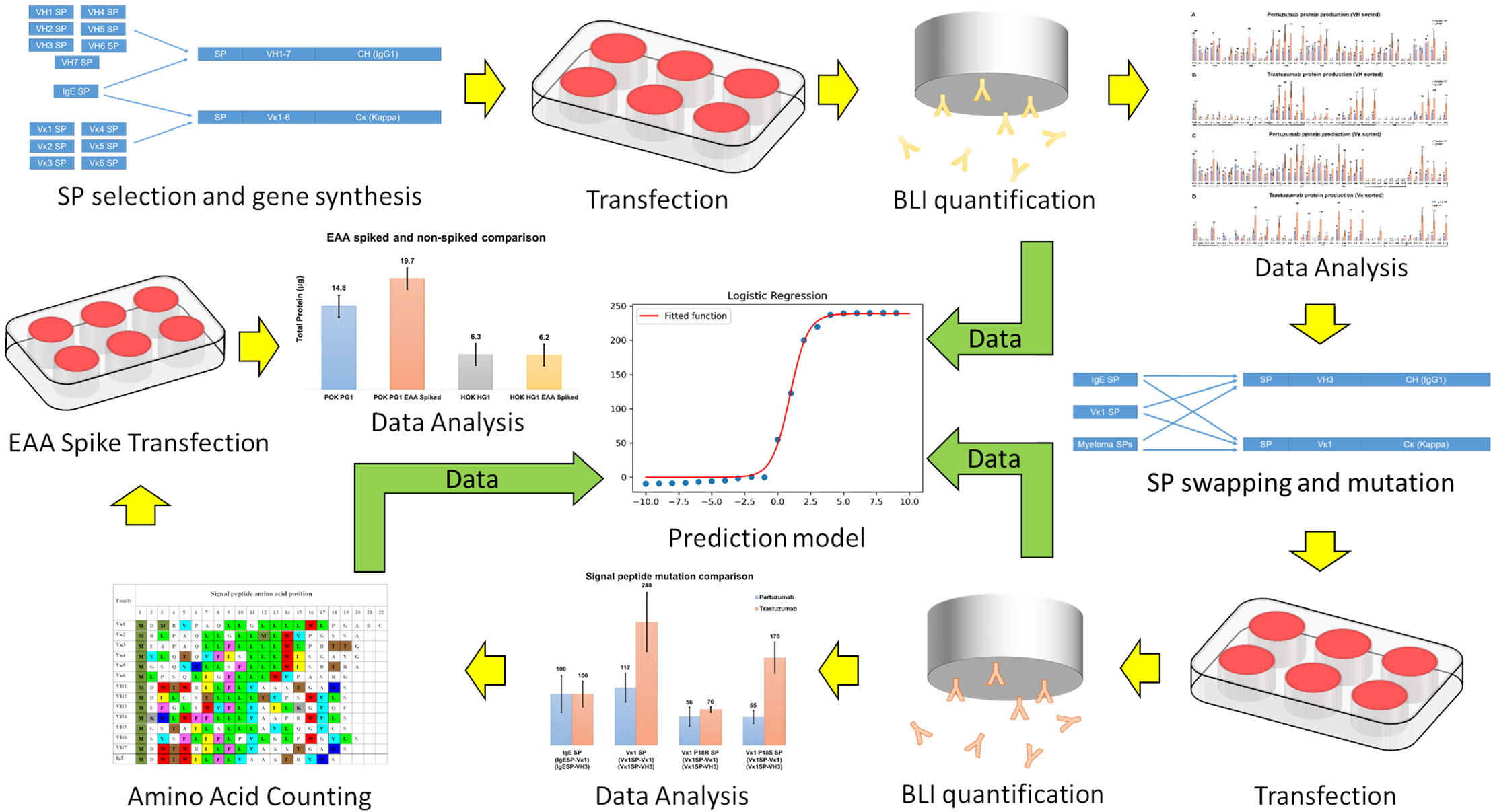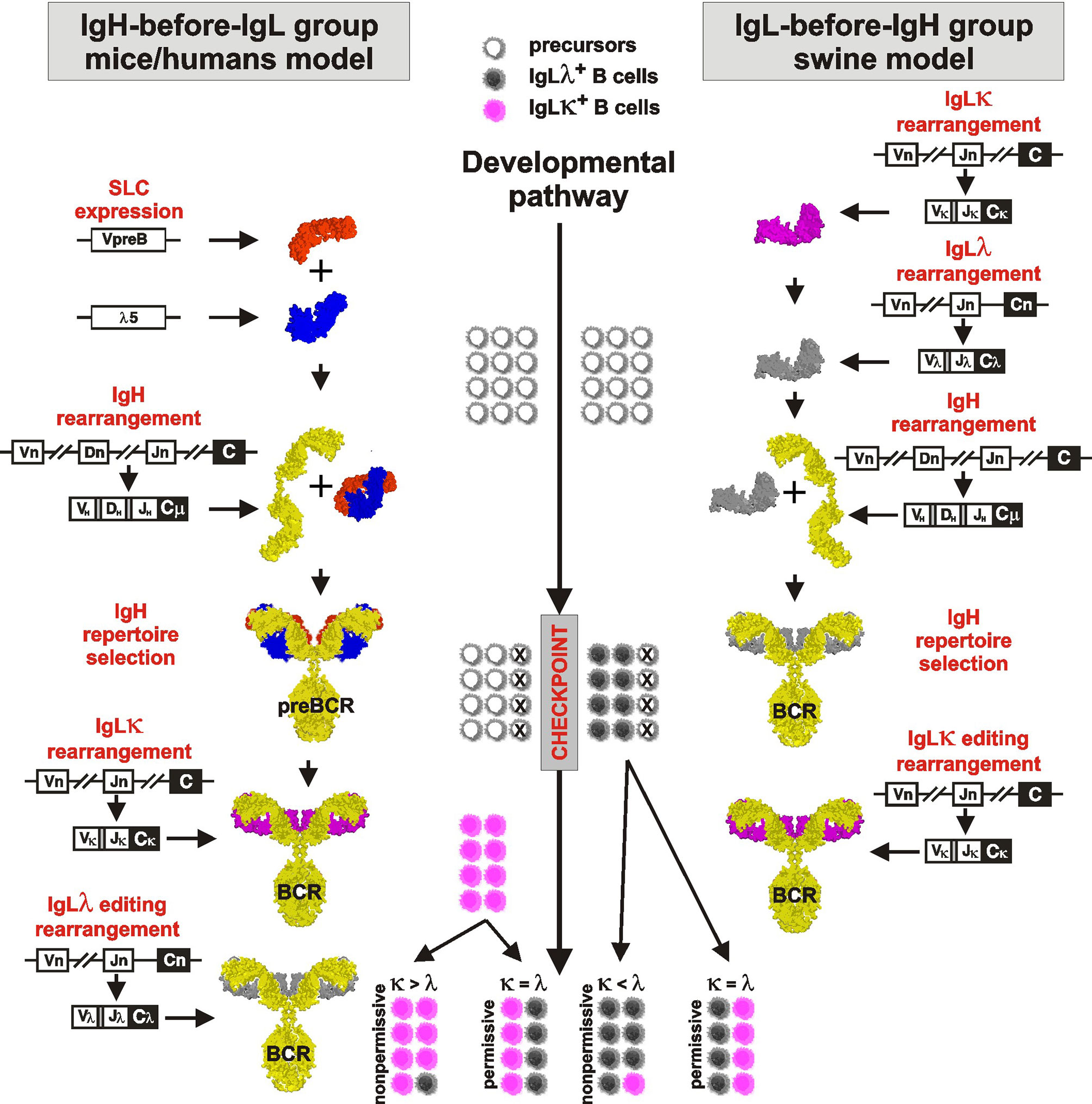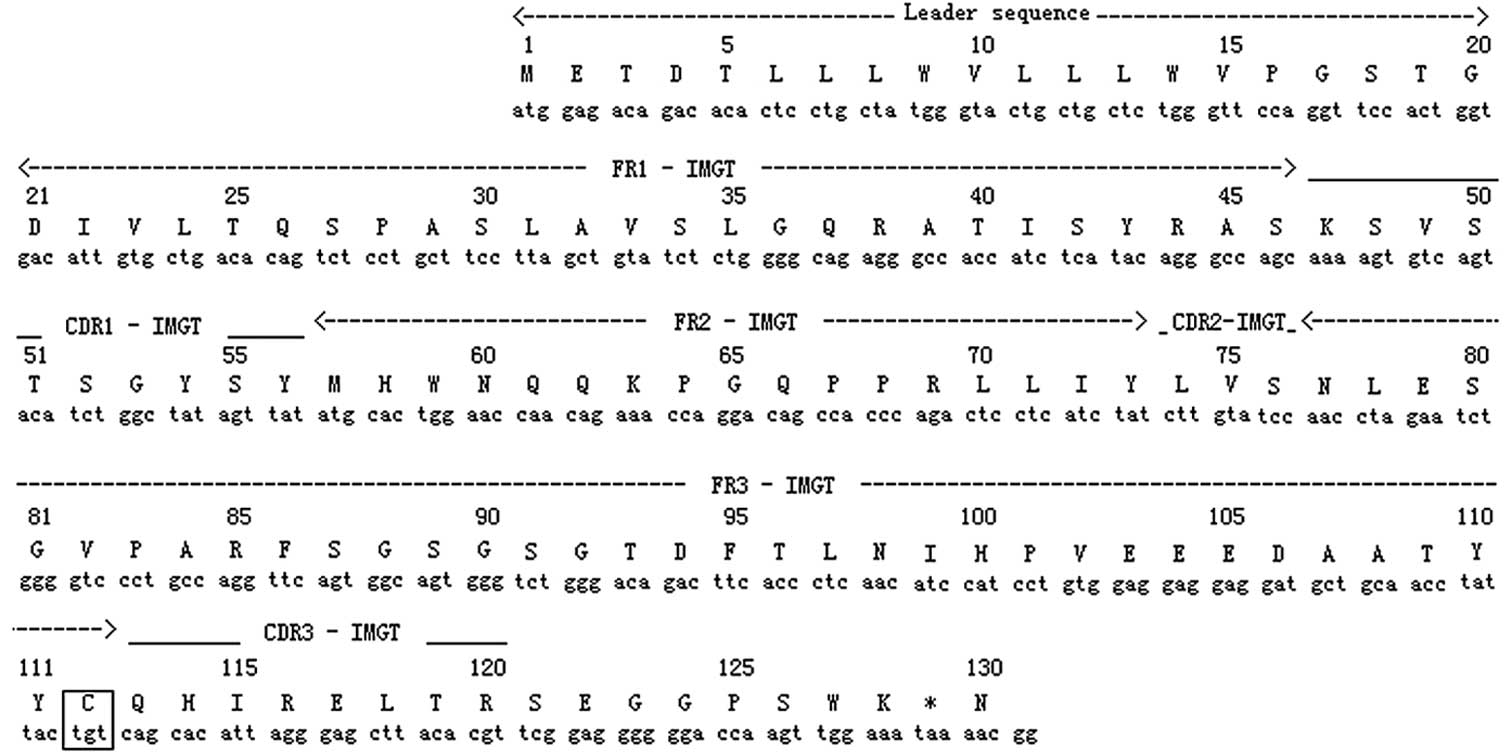Optimization of Heavy Chain and Light Chain Signal Peptides for High Level Expression of Therapeutic Antibodies in CHO Cells | PLOS ONE
Inclusion of the murine IgG kappa signal peptide increases the cellular immunogenicity of a simian adenoviral vectored Plasmodiu
Inclusion of the murine IgG kappa signal peptide increases the cellular immunogenicity of a simian adenoviral vectored Plasmodiu

Analysis of heavy and light chain sequences of conventional camelid antibodies from Camelus dromedarius and Camelus bactrianus species - ScienceDirect
Signal Peptide Optimization: Effect On Recombinant Monoclonal IgG Productivity, Product Quality And Antigen-Binding Affinity
Nucleotide sequences of human V H regions. Leader sequences and CDR... | Download Scientific Diagram

N‐terminal or signal peptide sequence engineering prevents truncation of human monoclonal antibody light chains - Gibson - 2017 - Biotechnology and Bioengineering - Wiley Online Library
Nucleotide and deduced amino acid sequence of the NS-1 V L. Leader, FR... | Download Scientific Diagram
Inclusion of the murine IgG kappa signal peptide increases the cellular immunogenicity of a simian adenoviral vectored Plasmodiu

Aydınlatmak kriket E konuşmak kıtlık Büyütme haşere kappa light chain sequence - trrajuniorsboosters.org

Rearrangement of Mouse Immunoglobulin Kappa Deleting Element Recombining Sequence Promotes Immune Tolerance and Lambda B Cell Production: Immunity

Structure and topology around the cleavage site regulate post-translational cleavage of the HIV-1 gp160 signal peptide | eLife

Frontiers | Essentially Leading Antibody Production: An Investigation of Amino Acids, Myeloma, and Natural V-Region Signal Peptides in Producing Pertuzumab and Trastuzumab Variants

Matrix Assisted Laser Desorption Ionization Time Of Flight Mass Spectrometry (Bruker Corporation) | Bioz | Ratings For Life-Science Research

Rearrangement of Mouse Immunoglobulin Kappa Deleting Element Recombining Sequence Promotes Immune Tolerance and Lambda B Cell Production: Immunity

Amino-acid sequence alignment of the HL4E10 hamster IgG light chain... | Download Scientific Diagram

Amplification of Ig variable regions and high-throughput sequencing... | Download Scientific Diagram

Amplification of Ig variable regions and high-throughput sequencing... | Download Scientific Diagram








